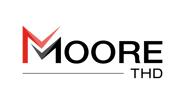Your mid-level donors represent a small but mighty segment – typically a small fraction of the donor base representing a large proportion of giving. To keep them actively engaged, it’s important to recognize their support through gratitude and by connecting them to the mission that they’ve generously chosen to support. Among the many proven strategies to engage mid-level supporters within THD’s Donor AdvancementSM practice is our Donor Ambassador program.
We sat down with Valerie Baccinelli, who worked as a Donor Ambassador (DA) at THD for close to 4 years before she recently transitioned to her new role as Account Executive. Val is giving us a glimpse into how she has helped champion mid-level donor participation and commitment for our clients.

Tell us a little about yourself!
Years ago, I was a canvasser for environmental nonprofits. We would get dropped into a neighborhood and go door-to-door, knocking until we raised $200. It gave me an appreciation for what it takes to fundraise and think in a different way than a marketer. It turns out I was really good at canvassing and connecting with strangers – I would get invited for dinner almost every night! Later into my career, I was recruited for this role which I saw as another way to grow as a fundraising professional toward my goal of eventually becoming a development director.
How would you describe the job of a Donor Ambassador?
Our job is to call all the mid-level donors for the assigned client and work to build a relationship with each one. That requires building trust and rapport, and with every interaction, you must figure out how to maintain the relationship on behalf of the nonprofit you are representing. But you are also there to fill in the blanks. It’s all about meeting the donor where they are, figuring out what inspired them to support the nonprofit’s mission in the first place and building on those interests and experiences.
Can you elaborate on how a Donor Ambassador fills in the blanks and what that means for the nonprofit?
We uncover the important factors (that would typically be missed) to maximize donor support and meet each individual where they are on their donor journey. Maybe the donor wants to donate, but not be involved. That’s valuable information for nonprofits to know and respect. Having this insight can maximize the donor’s support rather than bombarding them with information they don't want. Others want to be informed, but only like to receive direct mail. I’ve also communicated with some donors who can't see so well anymore, so they prefer phone call updates, not emails or direct mail.
For one health disease and support nonprofit, we learned that many of the people we were speaking with not only lived with somebody who had the disease, but they were the primary caretaker. They were looking for information on how to set up their home environment in order to care for their loved one, and also asked about resources for themselves. The DAs capture that rich detail and share it back with our nonprofit partners. From this insight, we created a mid-level outreach pamphlet specifically for caretakers that detailed how to care for their loved one along with some home safety recommendations and ways to find resources for themselves. Making those points of connection is not only beneficial to the supporter, but it also makes the organization’s mission more tangible which helps to make a broader case for support.
While your goal in connecting with donors is to engage, not solicit, how might the DA strategy impact gift giving?
In the course of conversations with donors, it's not unusual for them to ask for help or for information about additional ways to give. For example, I would get a lot of inquiries about planned gifts. During calls, I’ve had donors let me know they would like to leave their second home to the nonprofit or, because they have no next of kin, have planned to leave their whole estate to the organization -- these are amazing conversations and also are great data points for a planned giving officer to follow up on.
How would you prepare for your conversations? It takes work to build rapport with a voice on the phone.
I would go over the donor's experience with the organization and notes from past conversations, and plan where I might take the present discussion. I would also get a lot of strategic direction from the Account Manager – they share insights on donor engagement and other key analytics. And after a while, these become genuine relationships that you develop – you know about their lives and families, and many calls are similar to catching up with a friend.
It sounds like DAs are the human element of THD's mid-level giving strategy.
Exactly. There’s an art to relationship management. No amount of analysis can replace the human connection, especially for nonprofits. The same can be said of the DA’s ability to connect the dots between the analytics and what we know about the donor. Our job is to create a game plan based on what we know and the strategic goal.
Is there anything else you’d like to share about your time as a Donor Ambassador? Any other feel-good stories?
Yes! This job is just one feel-good vibe! You're speaking to people who are already open to the organization’s mission and want to discuss making the world better. Mid-level donors are hungry for information that gives them evidence of how their support is having an impact. For a humanitarian nonprofit, it was strategically important to share how the donor made a difference in Ukraine. The organization published an awe-inspiring blog post about the work they were doing that provided tangible evidence of the innovative ways they were providing emergency care. This was a great way to show donors where their money was going. The DAs called to make sure mid-level donors had seen the post and if they wanted to discuss the article. Stories like this allow us to build rapport around their contribution to innovative solutions and results.
One gentleman I called about Ukraine was excited to tell me he had gone to Staples to print out 100 copies of the blog post to share with his connections. He felt like he needed to spread the word for us. This enthusiasm is precisely what we hope for.
Takeaway
Donor retention is key to the success of any nonprofit. THD’s Donor AdvancementSM program is explicitly designed to help nonprofit marketers engage their mid-level donors with the mission in a meaningful way, amplify their lifetime value, and build a pipeline to planned and major giving. With our Ambassador program, nonprofits provide personalized stewardship and communication that will solidify the bond between their valuable mid-level givers. Contact us today to learn more about how we can help you take your mid-level strategy to the next level.





